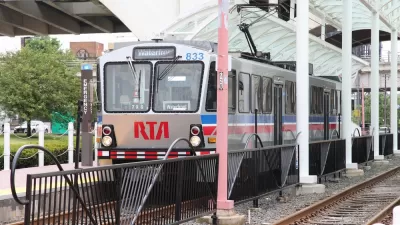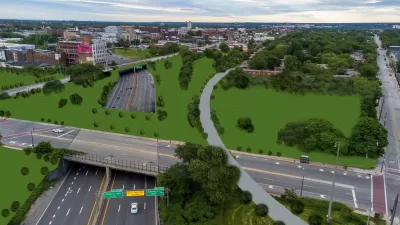Clarifying some of the jargon that drives the land bank process in Cuyahoga County, Ohio reveals the importance and scale of neighborhood stabilization in some parts of the country.
Mary Kilpatrick provides a glossary of terms to inform readers about the entire process surrounding land banks, especially in Cuyahoga County in Ohio, where thee city of Cleveland can be found.
So to described the county's land bank, kown as the Cuyahoga County Land Reutilization Corp., Kilpatrick writes: "The quasi-governmental nonprofit debuted in 2009 to acquire foreclosed and abandoned properties to reduce blight, increase surrounding property values and improve neighbors' quality of life." Since its inception, the land bank has assisted in renovating some 1,100 homes and demolished 3,500 derelict buildings, "acquired mostly through tax foreclosures, the federal Department of Housing and Urban Development and government-owned housing lender Fannie Mae."
The article includes several other procedural terms of relevance to residents in communities where blighted properties required land banking activities, including "mortgage foreclosure," "tax foreclosure," Board of Revision foreclosures," and "Sheriff's sale."
FULL STORY: What exactly is a land bank? Glossary for The House Next Door

Trump Administration Could Effectively End Housing Voucher Program
Federal officials are eyeing major cuts to the Section 8 program that helps millions of low-income households pay rent.

Planetizen Federal Action Tracker
A weekly monitor of how Trump’s orders and actions are impacting planners and planning in America.

Ken Jennings Launches Transit Web Series
The Jeopardy champ wants you to ride public transit.

Rebuilding Smarter: How LA County Is Guiding Fire-Ravaged Communities Toward Resilience
Los Angeles County is leading a coordinated effort to help fire-impacted communities rebuild with resilience by providing recovery resources, promoting fire-wise design, and aligning reconstruction with broader sustainability and climate goals.

When Borders Blur: Regional Collaboration in Action
As regional challenges outgrow city boundaries, “When Borders Blur” explores how cross-jurisdictional collaboration can drive smarter, more resilient urban planning, sharing real-world lessons from thriving partnerships across North America.

Philadelphia Is Expanding its Network of Roundabouts
Roundabouts are widely shown to decrease traffic speed, reduce congestion, and improve efficiency.
Urban Design for Planners 1: Software Tools
This six-course series explores essential urban design concepts using open source software and equips planners with the tools they need to participate fully in the urban design process.
Planning for Universal Design
Learn the tools for implementing Universal Design in planning regulations.
Ada County Highway District
Clanton & Associates, Inc.
Jessamine County Fiscal Court
Institute for Housing and Urban Development Studies (IHS)
City of Grandview
Harvard GSD Executive Education
Toledo-Lucas County Plan Commissions
Salt Lake City
NYU Wagner Graduate School of Public Service




























